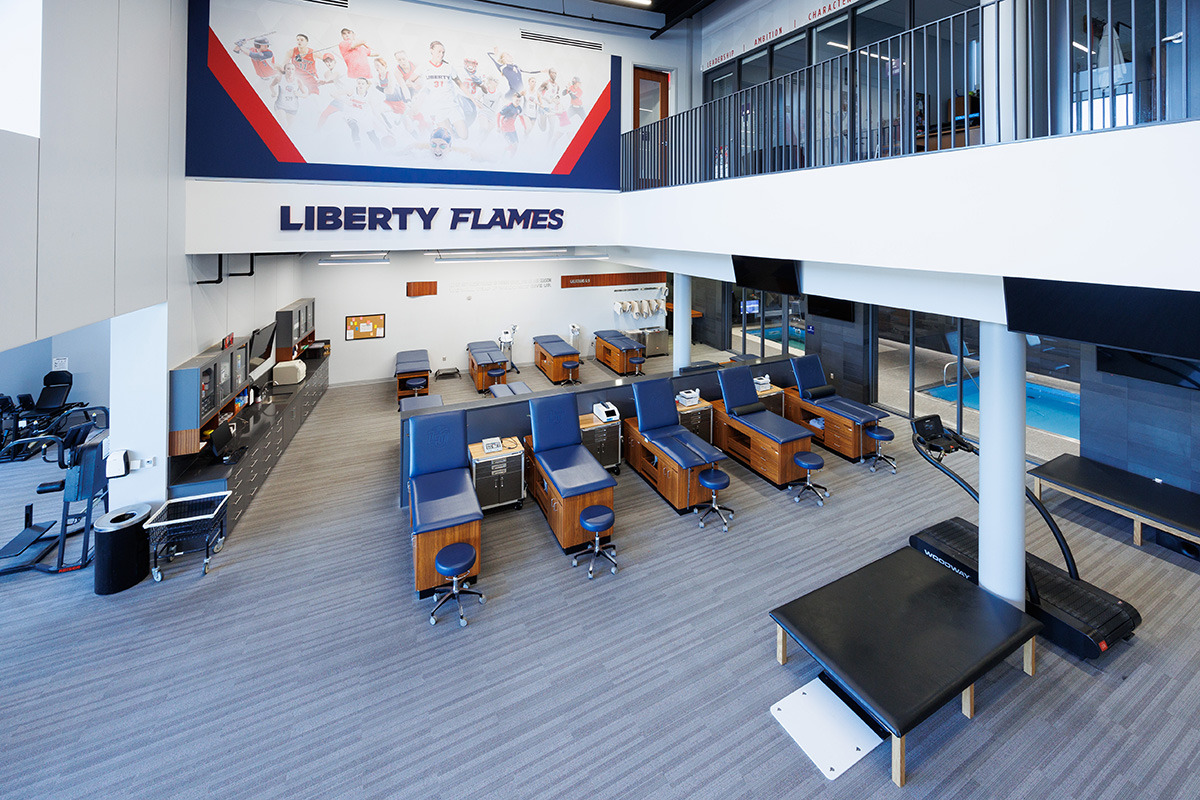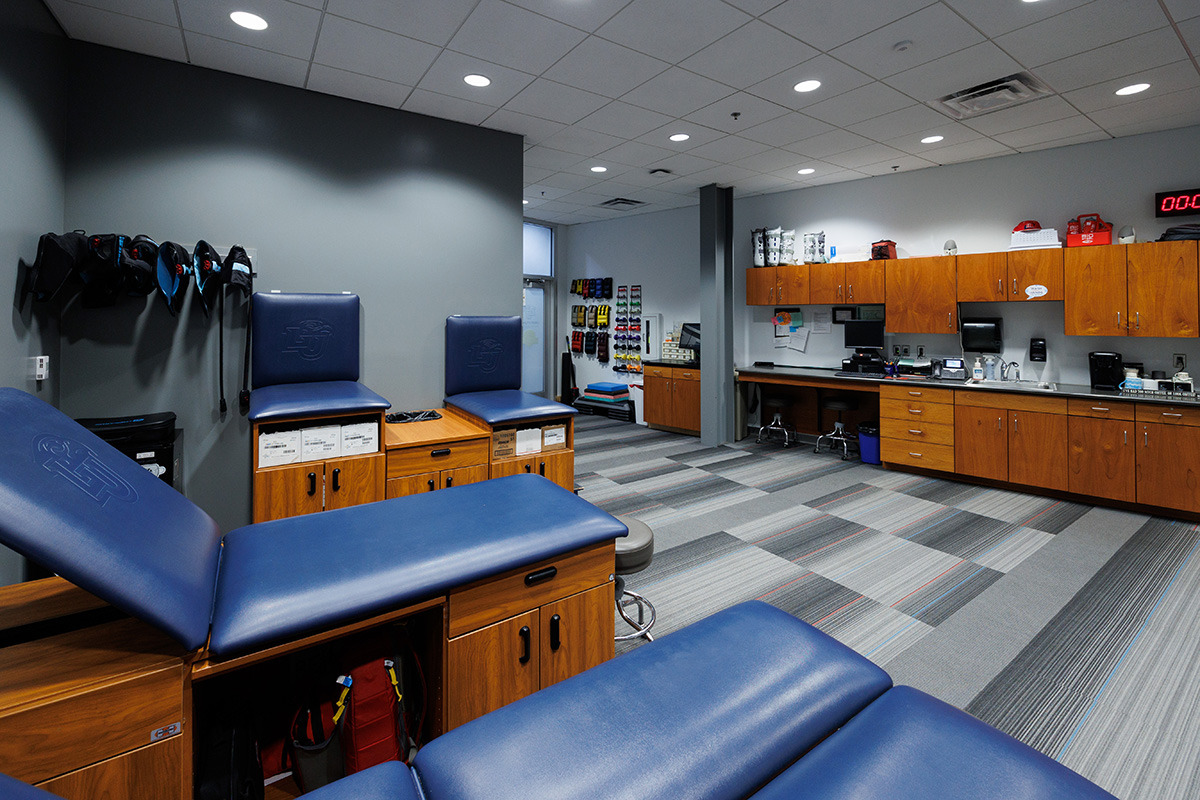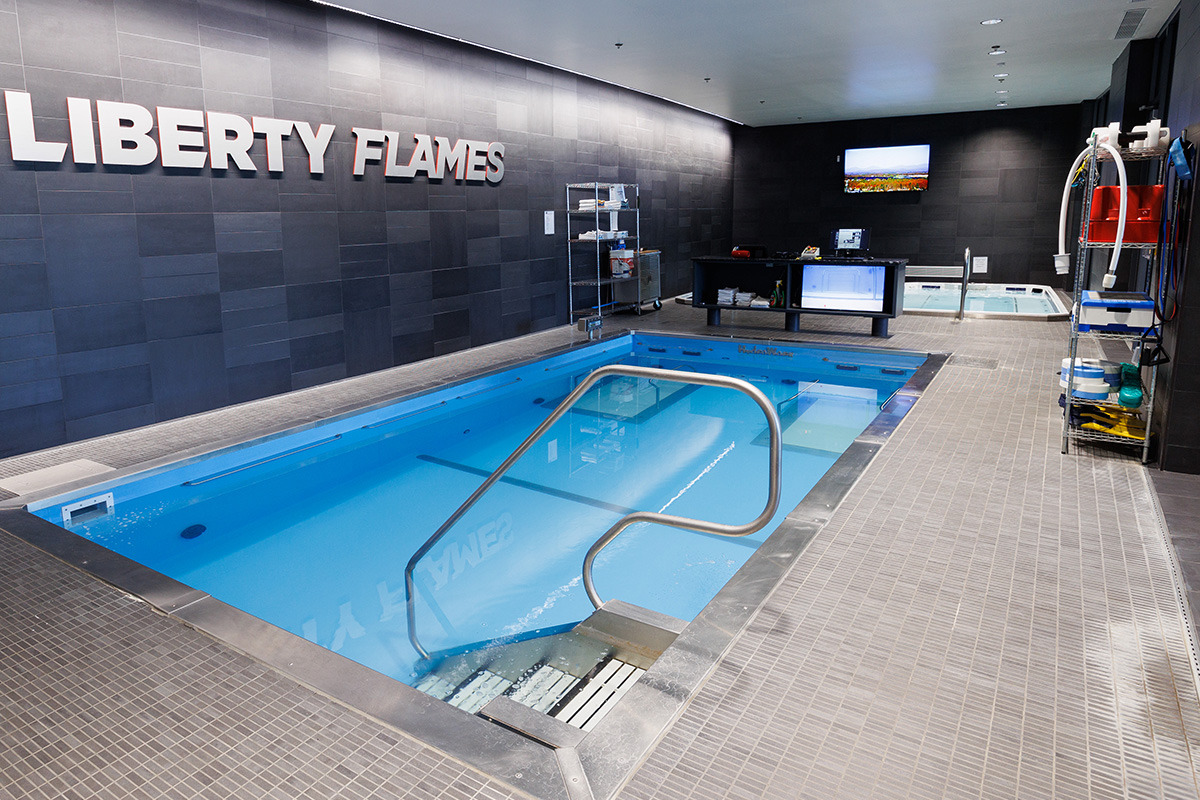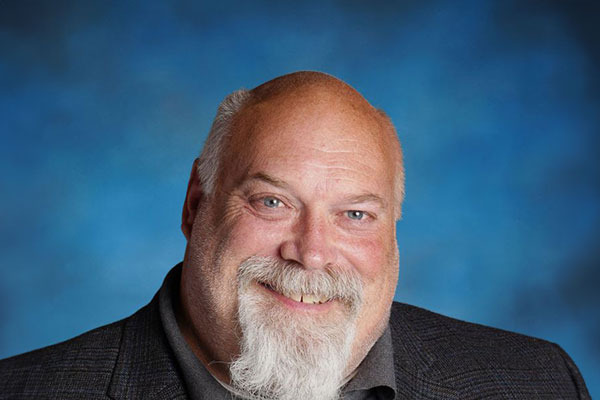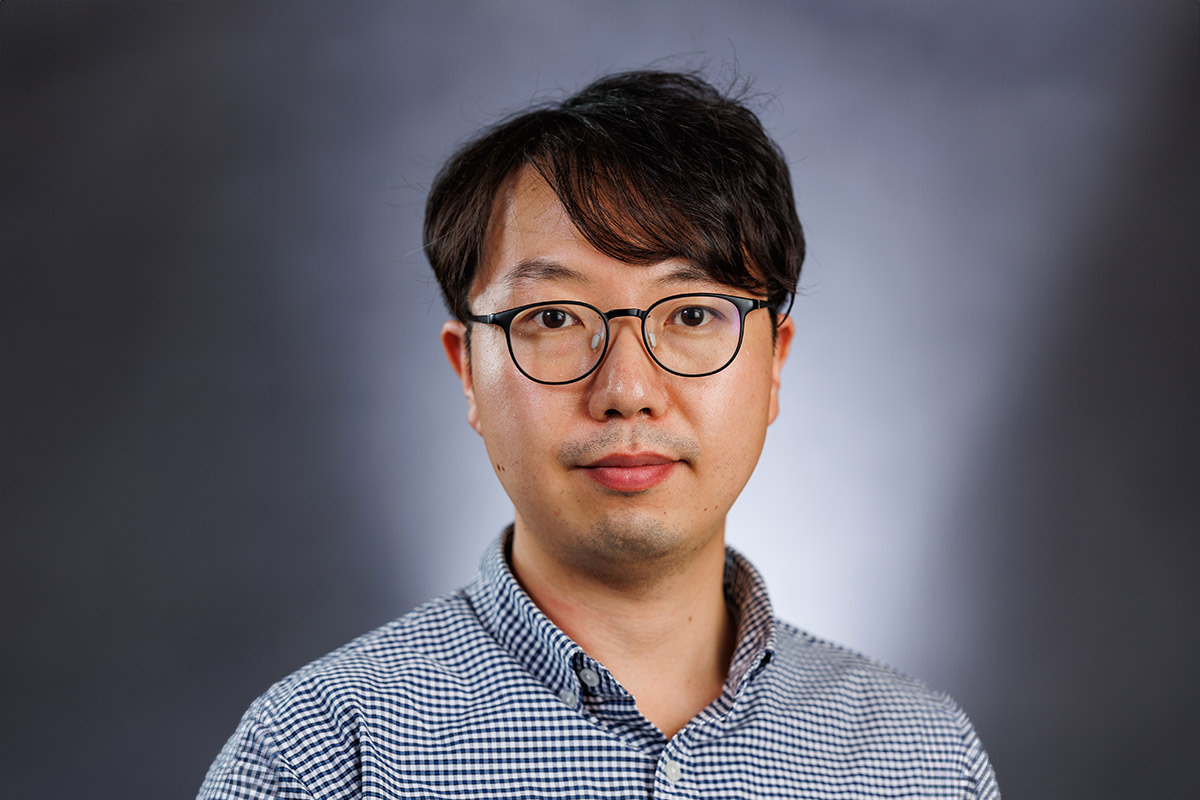Search News Archives
Filter News Articles
Additional Navigation
Liberty’s athletic trainers play valuable role in student-athletes’ health and performance
March 31, 2023 : By Ted Allen - Office of Communications & Public Engagement
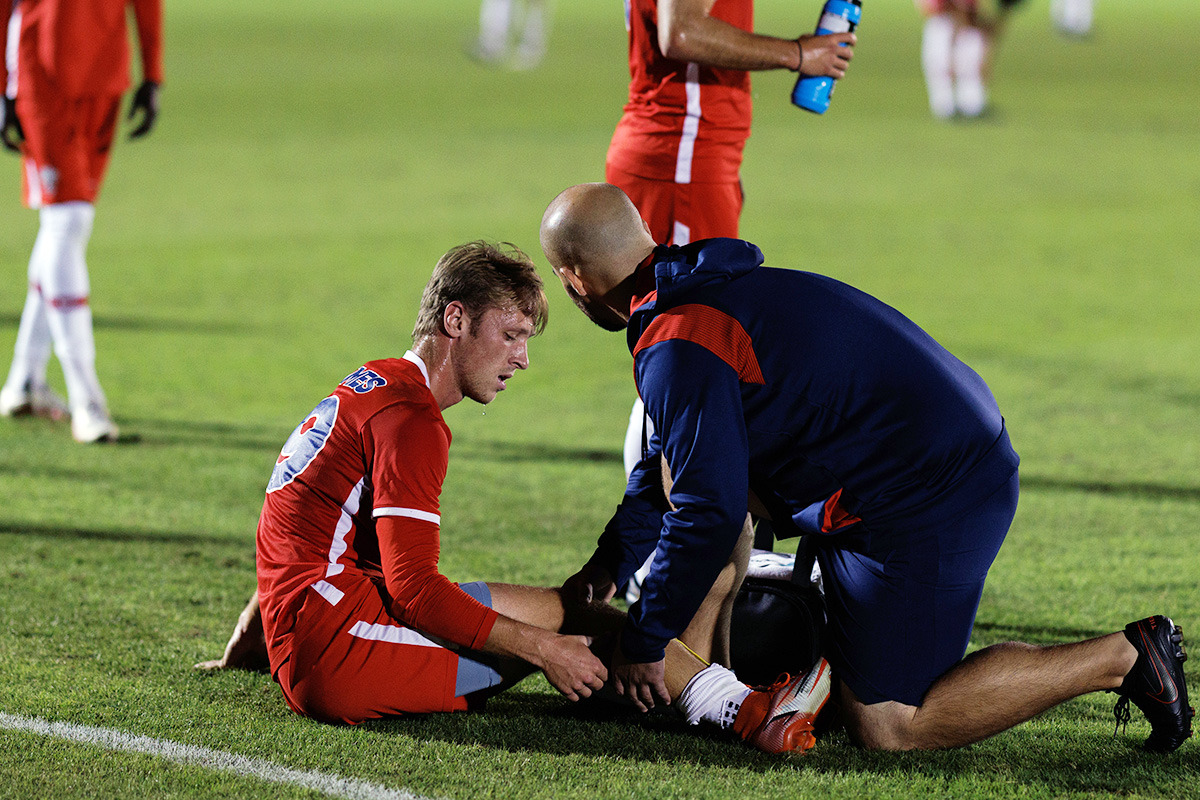
An athletic trainer has to be as versatile as a Swiss Army knife and as responsive as an EMT, fully equipped and ready to answer the call at any given moment.
Liberty University recently celebrated National Athletic Training Month in March, with the theme “There’s an AT for That.”
“There is a lot to what athletic trainers do in the day to day that people don’t even realize,” said Angie Witt (’97), who serves as Liberty’s Club Sports associate athletic director for sports medicine and performance as well as its senior women’s administrator. “Really, it’s about being versatile as far as the sports we are able to cover, the injuries, and the medical conditions we need to be aware of and able to treat.”
Witt wears a lot of hats around the LaHaye Ice Center and the Club Sports athletic training center, where her office is based.
“Taking care of the (Club Sports) athletes is obviously our first priority, but my profession and my position has evolved to taking care of the athletes in more than one way — physically as well as spiritually and mentally,” she said. “For me, it’s having an impact on their lives, more than just physically, for the long term.”
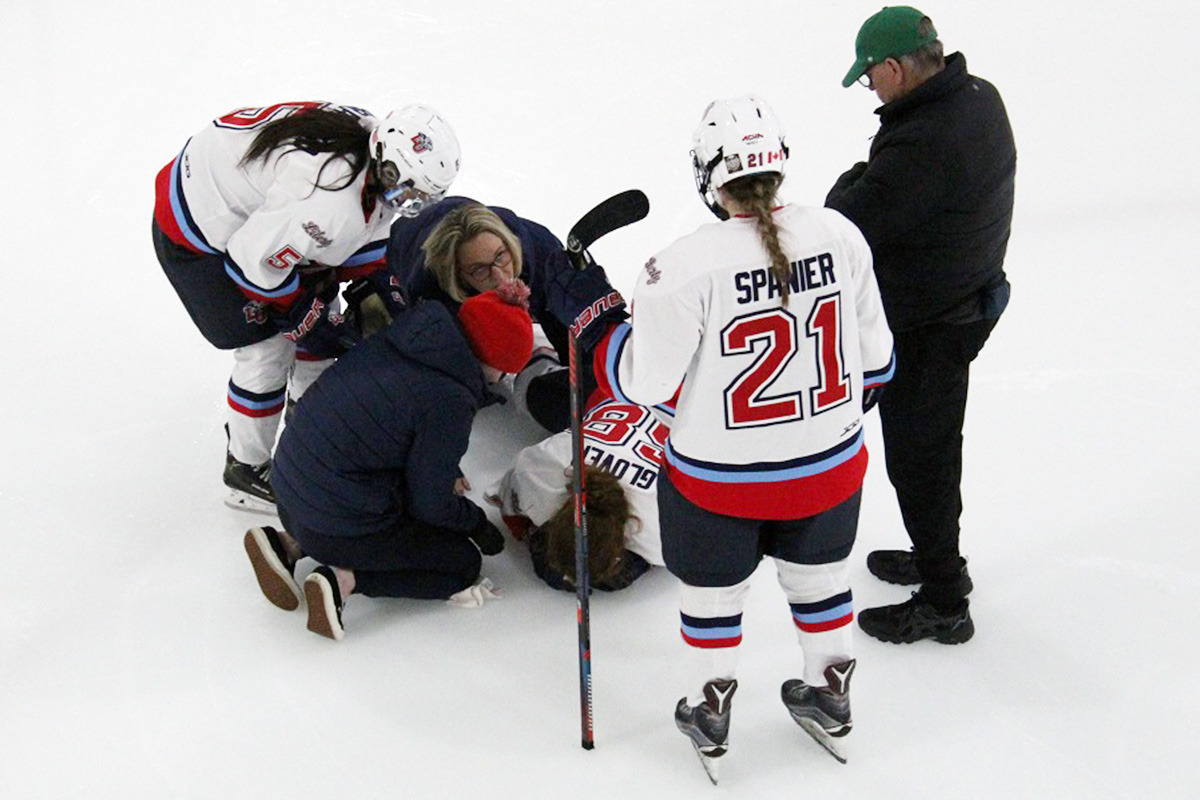
Liberty has over 700 student-athletes participating on 44 Club Sports teams. In addition to Witt’s staff of six athletic trainers, there are 16 full-time athletic trainers serving 590 student-athletics across Liberty’s 20 NCAA Division I athletic programs.
All of Liberty’s athletic trainers must stay on the cutting edge of advancements within the profession, while training graduate assistants and interns in their respective departments. They all complete 50 hours of continuing education and renew various certifications every two years to stay current with new procedures and techniques for preventative and rehabilitative treatment of their student-athletes.
“We are continuing to advance in the field of emergency medicine and the field of rehabilitation and concussion care,” Witt said. “Like with anything, in our profession, we have to stay up to date with our medical knowledge and our medical care, making sure we’re doing best practices, doing what’s been researched and proven to work.”
The field of sports medicine has changed tremendously in the last two decades.
“The technical age has (enhanced) analytics to analyze movement and recovery, as well as in diagnosing injuries through MRI (magnetic resonance imagery) that didn’t exist 30 years ago,” said Liberty NCAA Division I Assistant Athletics Director for Sports Medicine Scott Lawrenson (’86).
Lawrenson returned to his alma mater in July 2018, two years after receiving the Virginia Athletic Trainers Association College and University Athletic Trainer of the Year award at nearby Randolph College.
“Rehabilitation techniques in the physical therapy clinic have developed over the years and evolved with new modality equipment,” he said, referring to scanners and machines that diagnose and evaluate injuries. The athletic training and rehabilitation clinic at the Liberty Athletics Center is equipped with some of the most state-of-the-art machines in the field.
“When the LAC was built, they loaded the athletic training room with a portable X-ray machine and a diagnostic ultrasound and other tools that other (NCAA Division I programs) don’t have,” Lawrenson said. “We have modalities and devices such as a high-tech laser and ultrasound machine, pneumatic recovery boots, antigravity running machines that reduce body weight, underwater treadmills, and contrast pools (hot and cold spas).”
Witt stresses the importance of having an athletic trainer at every Club Sports event as an integral part of the emergency action plan (EAP) for the particular sport. The EAP for hockey, practiced in clinics conducted before the start of each season and reviewed before each game, was updated after Division I men’s hockey senior forward Josh Fricks suffered a spinal injury in a home game in January. Fricks has recovered remarkably, but it could have been much worse had Witt and her staff on hand during that incident not followed the EAP accordingly.
“Our emergency action plan went great … and we did exactly what we were trained to do,” Witt said. “No matter how well you do things, you can always improve, so it’s just looking at all of the ‘what-ifs.’ Our sports medicine team, including our chiropractors who are trained in movement and screening and our doctors who aid us in orthopedic surgery, has continued to collaborate together to come up with best practices and best ways to take care of and make sure we’re doing what is best for our athletes.”
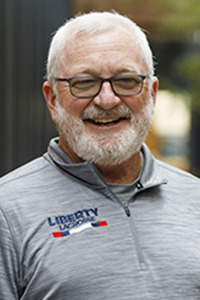
Lawrenson, who previously worked for 20 years as head and assistant athletic trainer for Major League Baseball’s New York Mets and Washington Nationals, respectively, said Liberty’s athletic trainers spend as much time in injury prevention as rehabilitation.
“In all sports, we have a ground base mentality that the more we can do to prevent injuries from ever happening, the less we have to do on the back side,” he said. “That’s part of our daily preventative care routine, with the athletes coming in here to train with our staff and do soft tissue prep on their own, so that by the time they hit the practice or game (they are less prone to injury). A lot of it is education and putting the responsibility on the athlete to put the work in.”
Liberty has been doing its part to train students to enter the athletic training profession for the past 19 years. The Department of Allied Health Professions under the School of Health Sciences produces some of the most qualified athletic trainers through its B.S in Athletic Training and now two-year M.S. in Athletic Training degree. Students are equipped with the knowledge and clinical skills to launch their professional careers as compassionate evidence-based healthcare providers.
The May 11-13 Commencement Exercises will be the last that Liberty will graduate students from its four-year B.S. in Athletic Training degree and first to send out graduates of its M.S. in Athletic Training program. Moving forward, undergraduate students interested in going into athletic training can pursue a B.S. in Exercise Science with a Therapeutic Science concentration that prepares them to complete all of the prerequisite courses for the master’s program.
